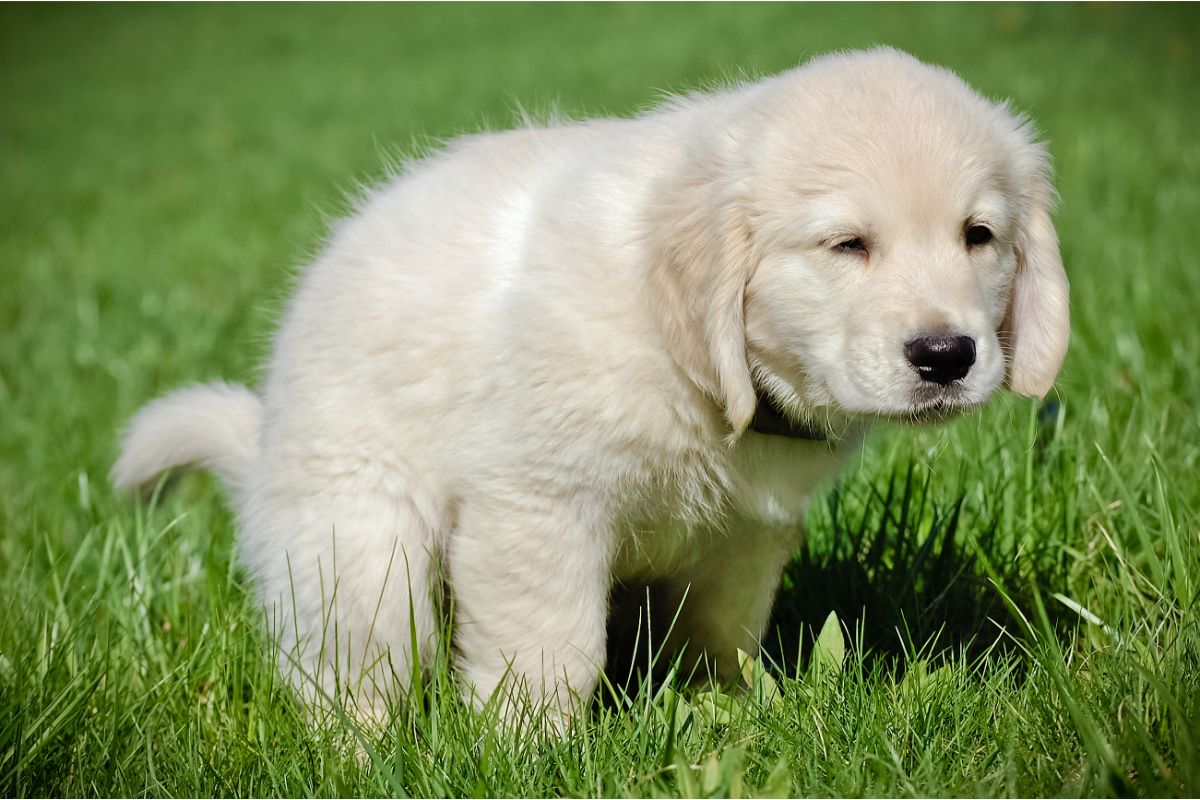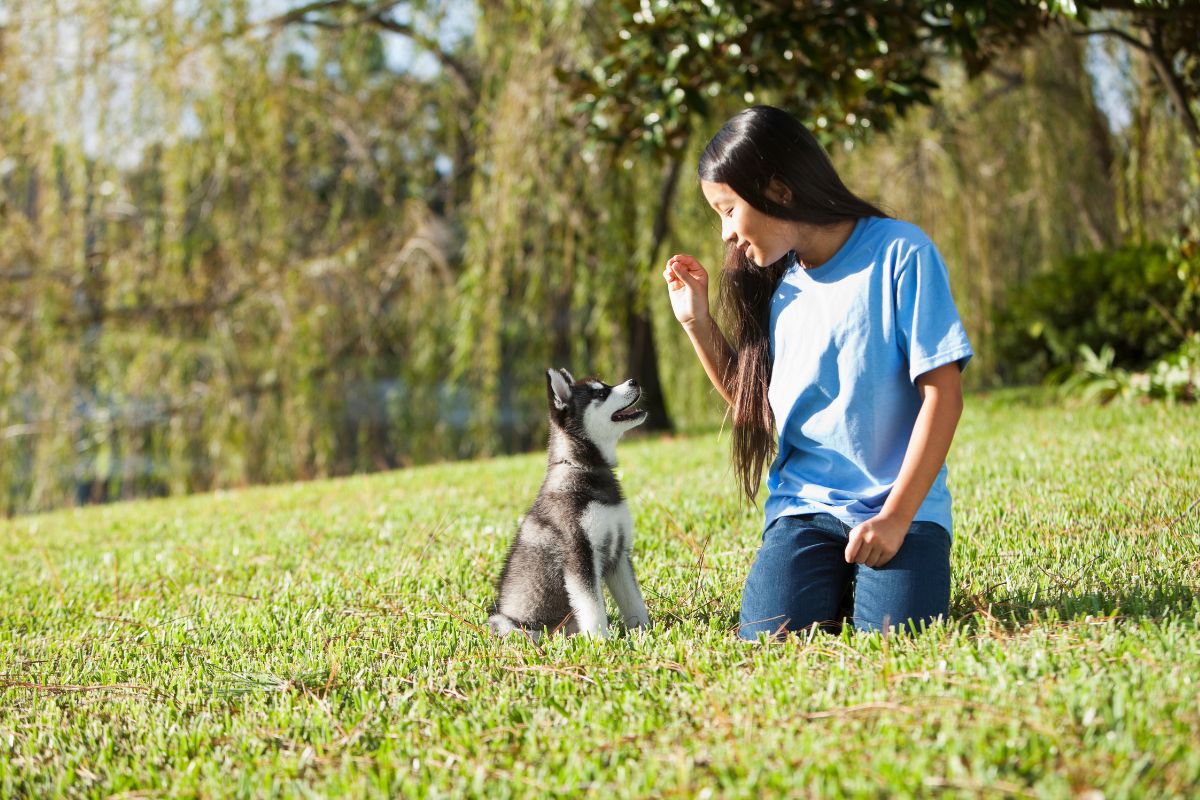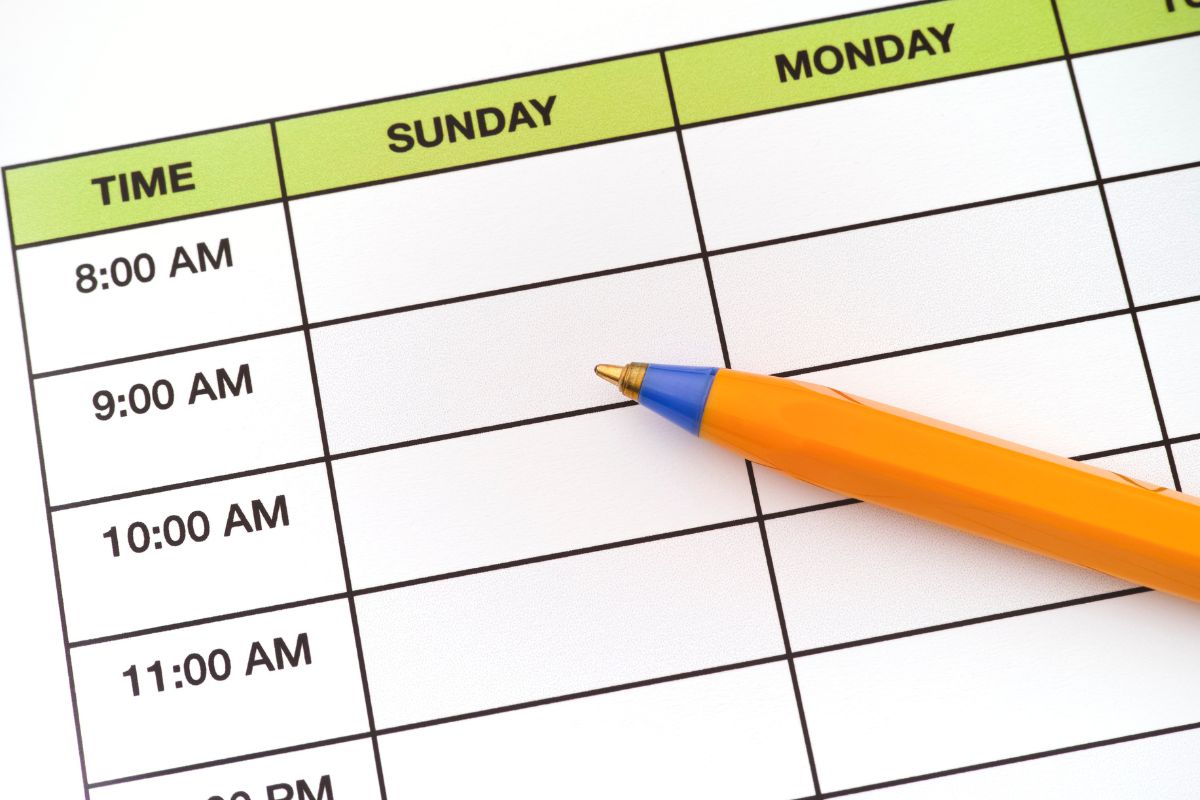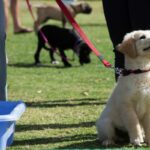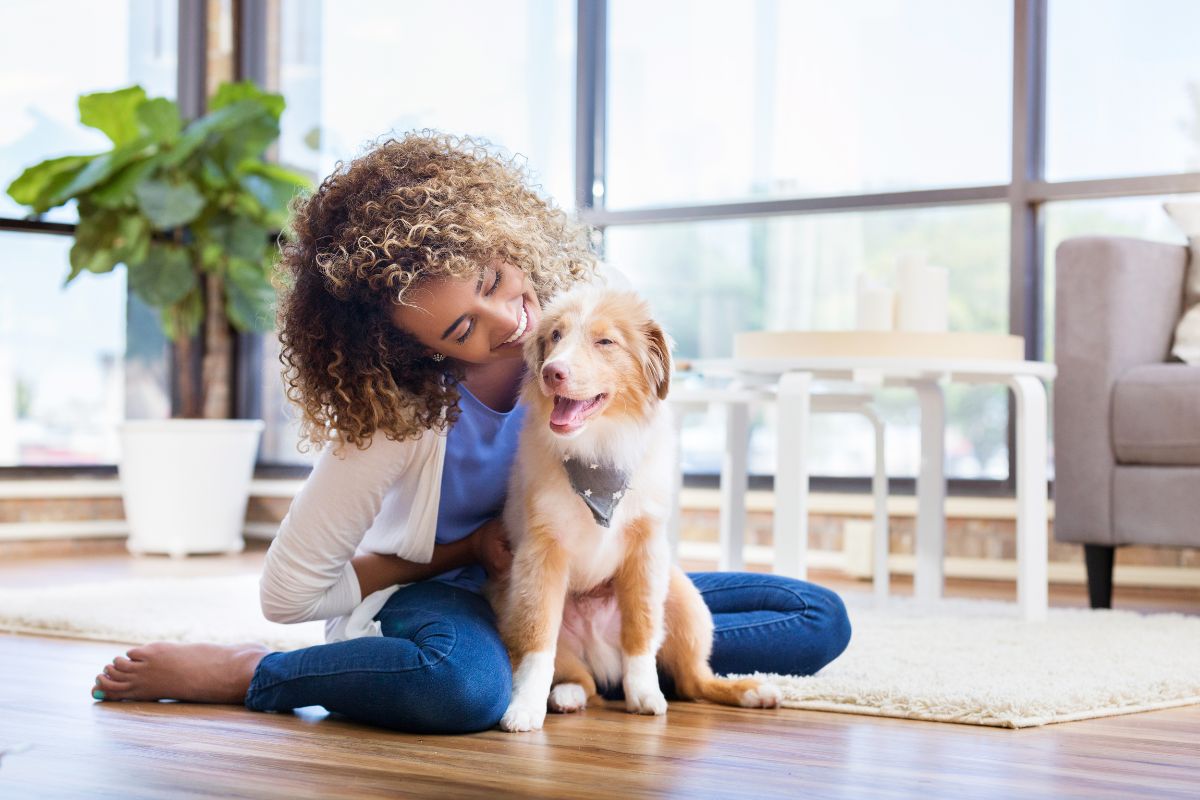Do you have a new puppy at home and want to teach them how to use a potty pad?
Potty training your puppy can seem like an intimidating task, but with the right techniques and patience, it is possible to train your pup quickly and effectively.
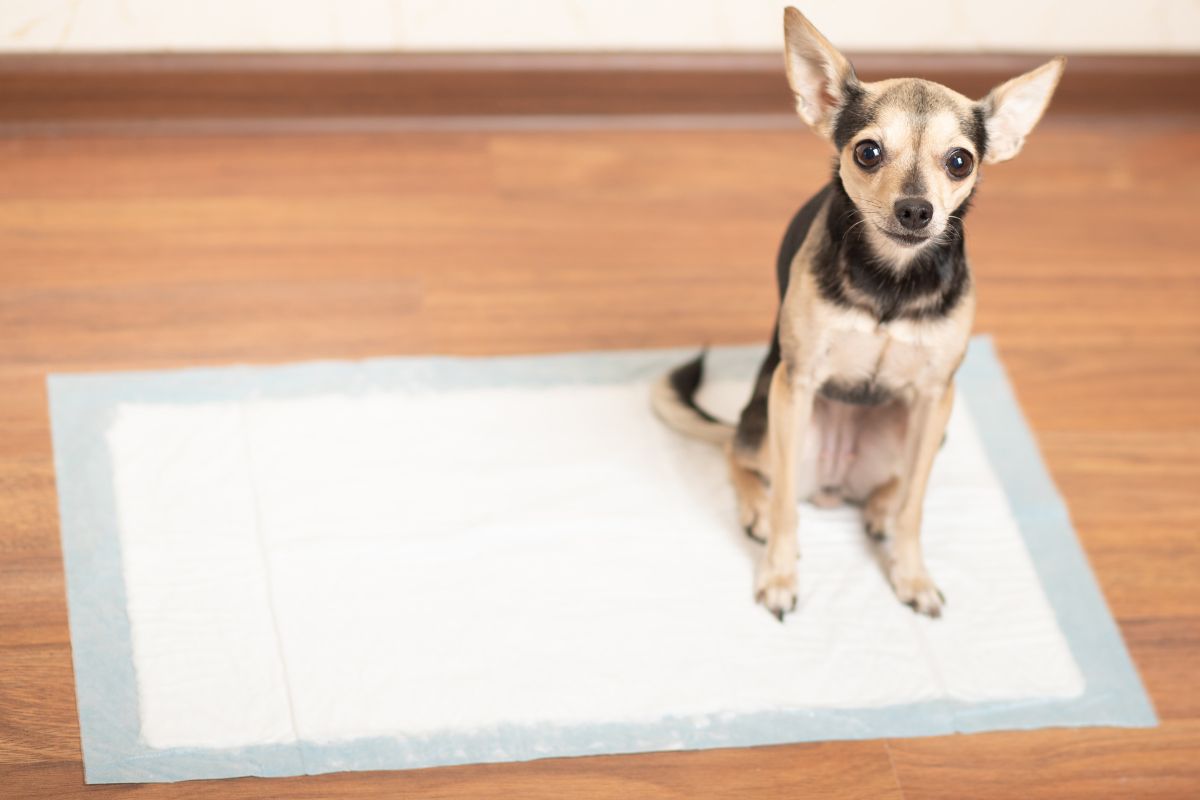
In this article, we will go over the steps you need to take in order to successfully potty-train your puppy using a potty pad.
Why Make Use Of Potty Pads?
Potty training is an essential part of owning a dog; it teaches your pet to use the bathroom at appropriate times and in designated areas.
Training your pup to do this using potty pads helps them understand when and where they are allowed to answer nature’s call, reducing messes around your home and cultivating good hygiene habits in the process.
By establishing regular routines and sticking to them, you can help foster clear expectations while also encouraging positive reinforcement when goals are reached.
Additionally, taking them out on a scheduled basis can be helpful, like right after meals or before bedtime.
Make Sure To Choose The Right Potty Pad
When it comes to choosing a potty pad for your puppy, there are several options available.
You’ll want to choose something that is absorbent and easy to clean up, as well as large enough for the messes that could be made if the puppy accidentally does their business just off the pad itself.
If you have a large breed dog, you should look into heavier-duty options such as pee pads or indoor/outdoor carpeting potty stations, which offer more sturdy surfaces to support your pup’s needs.
Additionally, these potty stations offer features such as built-in drainage systems which make clean-up much easier as they drain away waste material quickly, making it easier for adult supervision.
Ultimately, what works best is up to you but considering all the options available will help you create the best environment for your puppy’s success in housebreaking and overall health.
How Do You Set Up A Potty Pad In Your Home?
When it comes to potty training a puppy, there are a few things to keep in mind. One of the most important is where to put the pads – and that’s especially important if you’re doing it in your home.
Choose A Good Spot
First, choose a spot with relatively low foot traffic. For example, placing them by the front door or near an area where the pup tends to play would be great choices.
Next, consider where the pad will be in relation to other areas of the house. If your pup is only going to be using one potty area, it may be best to keep it close by.
However, if you have multiple dogs in your home, scattering their pads around will likely be more effective.
Train In Confined Spaces Alongside Pads
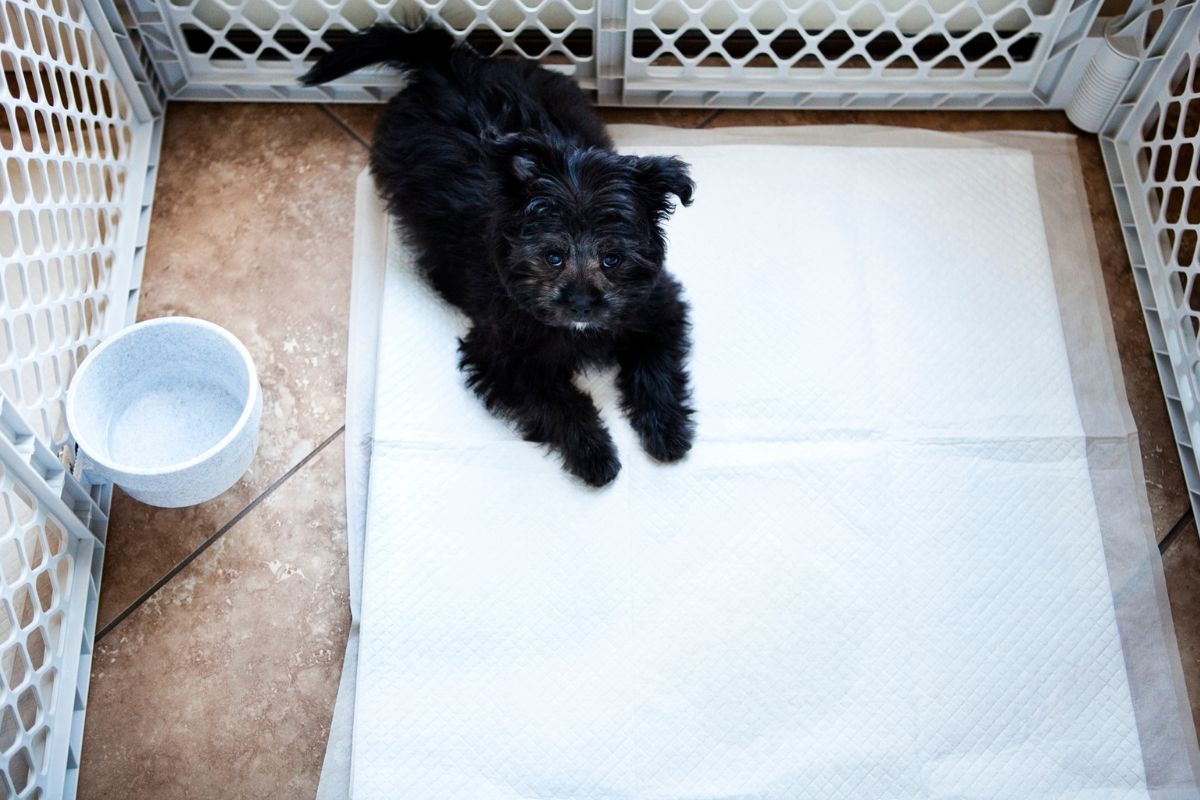
Having your dog stay in a confined space can be an effective way to help your pup learn to hold their pee for long periods of time.
The best method for teaching this is through crate training, setting up the crate as a safe and happy place for your pup to stay even when you’re not able to directly keep an eye on them.
It’s important that the crate-training process goes slowly; begin by putting treats or toys inside the crate while leaving the door open, so your pet learns that it’s a safe and comfortable area they can choose to go in.
Gradually increase the amount of time they spend there, and make sure to give lots of positive reinforcement when they successfully stay there when desired.
Creating A Schedule For Potty Training
Potty training a puppy can be a tricky process. Establishing and sticking to a routine is the key to successful potty training.
Start by creating a schedule for meal times, playtime, and bathroom breaks.
Generally, you can count on your puppy being able to hold their bladder for an hour at each milestone – so if your puppy is two months old, they can likely wait up to 2 hours between each bathroom break.
It’s important not to exceed that two-hour window, or they may have an accident in the house.
Make sure you take your puppy outside frequently, at least every two hours, whenever they wake up from naps, after meals, and during playtime.
If you make potty time part of the daily routine, it will help them learn when and where it’s appropriate to go.
Accidents during potty training are inevitable for puppies, as they’re still learning about their environment and developing control over their bladders.
Don’t scold or punish if this happens as that could create more issues in the future – simply clean up the mess with an enzymatic cleaner.
Introducing Them To The Potty Pad
Introducing the potty pad to your pup should be a well-thought-out process. It’s important to always keep your dog on a leash before you start using the potty pad, as this is crucial for training and behavior purposes.
This is because it’s easier for us to show them where they should do their business instead of expecting them to find it on their own.
How Do You Teach Your Puppy To Use The Pad?
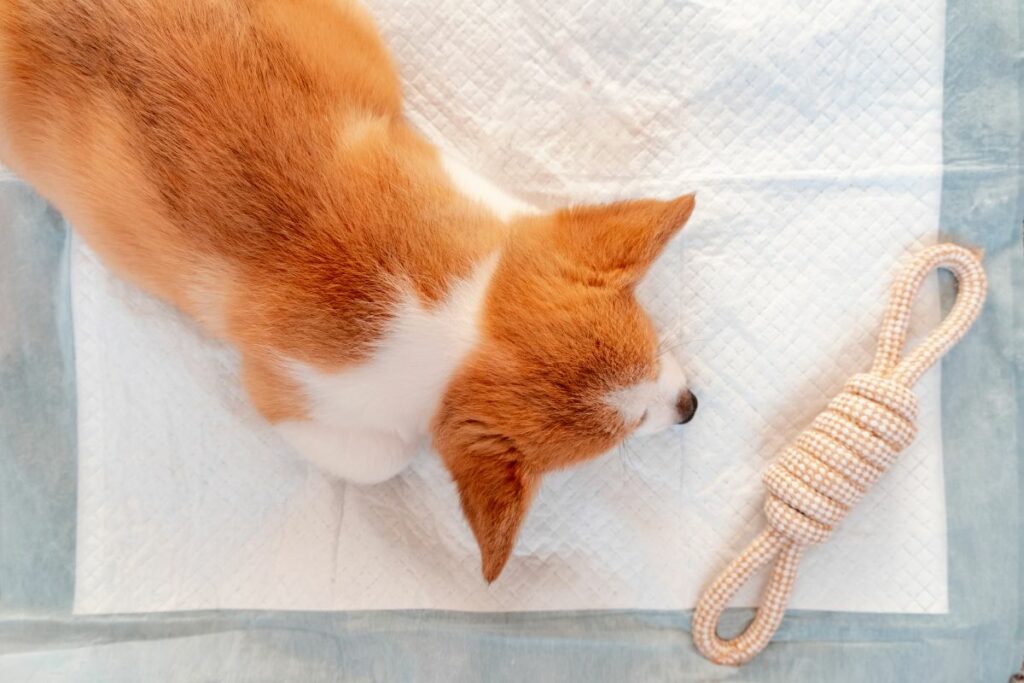
Train Them On Command
Training your dog to go to the bathroom on command can be a great way to help them behave when in new environments or during everyday activities.
It’s useful for dogs of all ages, from puppies just learning house-training etiquette to senior dogs who need more frequent bathroom visits.
All types of dogs may also benefit from knowing their regular bathroom times, so it’s important to become aware of any cues or tendencies your pet has at specific times or after certain activities such as playing, eating, and waking up.
Above all else, make sure to praise your four-legged friend each time they successfully follow the command and go to the bathroom – this is essential for building their confidence and encourages future success.
Be Consistent
The key to successful potty training is consistency. Whether you’re teaching your puppy to go outside or on a potty pad, it’s important to remain consistent with the process.
First, keep your puppy on as close to a regular schedule as possible.
This will help you anticipate when your pup might need to use the bathroom and make sure they don’t have accidents in the house.
Second, choose a phrase that you use each and every time your pup needs to go potty.
It can be anything from “go potty” to “business time”, but make sure everyone in the home uses the same phrase for consistency. Next, keep the potty pad in the same spot until your puppy knows what they need to do without fail.
When they’ve mastered this step, you can slowly move it closer and closer toward an area close to or even outside where they should eventually go potty on their own.
Providing Positive Reinforcement
Rewarding your puppy for desired behavior is an essential component of successful dog training.
While praise and verbal affection can go a long way, treats are often a particularly effective way to reward your pup.
If your puppy goes potty on their designated potty pad, for example, make sure you immediately express your gratitude – through petting and verbal reinforcement in an excited tone of voice – and then give them a treat reserved solely for potty time.
This treat should be soft so as not to interrupt the positive reinforcement process when it’s being administered right after.
Apart from this, rewarding your puppy with a treat they really enjoy is also an effective way of helping them through the process (see also “Why Puppies Bark: 8 Effective Strategies To Stop It“).
When using treats to reward good behavior, ensure that you find something that makes your puppy really excited, so they are more motivated – after all, positive reinforcement is key.
Some Common Mistakes Inexperienced Puppy Parents Make
Don’t Reward Bad Behavior
In addition to rewarding desirable behavior, it’s important that you also ignore bad behaviors, such as growling or barking (see also “The 6 Types Of Growling“).
Allowing these behaviors to persist will only result in continued misbehavior rather than positive responses to compliments and treats.
Therefore, if you’ve been consistently praising and treating your pup when they do something good, but they still respond with undesired behaviors, take some time to step back and understand why this might be occurring before administering rewards to them.
Don’t Encourage Them Chewing Or Playing On The Pad
When it comes to potty training your pup, it is important to ensure that you do not make any mistakes.
Consequently, when using a potty pad, be sure not to allow your puppy to pull or chew on the pad, eat food off it or play on it as these behaviors will only confuse your puppy and ultimately affect their understanding of why the pad is there in the first place.
On top of this, it is equally essential that you keep the location of the potty pad consistent, as moving it around may lead to further confusion and can create difficulty for both you and your pup in terms of making any progress.
Handle Accidents Calmly
When it comes to potty training accidents, the most important thing is to stay calm and handle them patiently.
It’s only natural for puppies to make mistakes, so don’t get mad and reprimand them if they have an accident.
Instead, focus on rewards and praise when your pup does something great.
If you catch your puppy in the act of having an accident, gently take them outside and remind them what they should be doing before any reward or praise.
Additionally, it is helpful to thoroughly clean up any messes caused by potty accidents.
As a best practice, use an enzyme-based cleaner that neutralizes odors, so your puppy isn’t drawn back to that spot for a repeat accident.
With patience and consistent reinforcement of good behavior, you will eventually have a puppy who is well-trained and fully housebroken.
The Best Way To Troubleshoot Accidents
When it comes to teaching puppy potty habits and proofing their behavior, it is important to understand their behavior and be aware of the best strategies for helping them.
If your puppy isn’t making it to the potty pad on time or if you are having issues keeping an eye on them, and they have accidents when you’re not looking, there are ways to help.
Moving The Pad Closer
Putting the potty pad closer to where they usually play or eat is a good idea, as is adding a bell to their collar and leaving the leash on for them to drag behind for easier tracking.
Additionally, putting your puppy in a crate or exercise pen can be beneficial in encouraging them not to mess up where they sleep.
If your puppy seems to be constantly urinating, it’s important that you bring this up with your vet, who may suggest other means of solving the problem.
Consistent Attention
In addition to the physical aids mentioned, it’s also important that puppies get consistent attention when inside or outside in order to build their potty training routine (see also “Ways To Potty Train Your Puppy If You Live In An Apartment“).
Setting aside time each day for supervised play lets puppy parents signal when it’s ok for a pup to explore and when it’s time for focused attention.
Final Thoughts
Training a puppy to use a potty pad takes time and patience, but with consistency and positive reinforcement, your pup will soon learn the basics.
Never forget to reward any successful attempts at using the potty pad, as this will encourage them to repeat the behavior and help them understand why it’s important.
- How To Teach Your Puppy Their Name Easily! - July 18, 2023
- Is Your Puppy Counter Surfing? Find Out How To Stop It! - July 18, 2023
- How To Train Your Puppy For Car Rides: Everything You Need To Know - July 18, 2023


